
Day-by-Day Timeline of Events
March 2, 1861
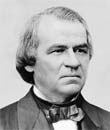
May 7, 1861
The state of Tennessee formally aligns its military capabilities with that of the Confederacy.
October 24, 1861
Tennessean William Brownlow releases the final edition of the newspaper "Knoxville Whig" which has stood in support of anti-secession.
November 25, 1861
Judah Benjamin, the Confederate Secretary of War, calls on all East Tenessee traitors to be executed where they stand.
February 4, 1862
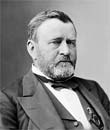
February 5, 1862
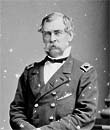
February 6, 1862
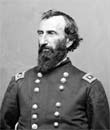
February 6, 1862
At 11:00AM, General Smith's forces begin their march against Fort Heiman along the Tennessee River.
February 6, 1862
Union Flag Officer Foote leads his gunboat flotilla against Fort Henry. The action takes place from 11:00AM until about 1:55PM and is in concert with land movements of General McClernand and General Smith under General Grant.
February 6, 1862
At 6:00PM on this date, General Grant's troops finally claim (through occupation) Fort Henry on the Tennessee River.
February 8, 1862
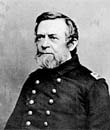
February 11, 1862
General Grant orders an advanced force to begin their march towards Fort Donelson.
February 12, 1862
Despite the combined strength of General McClernand and Smith's divisions, General Grant is forced to stop within twelve miles of Fort Donelson as he remains outnumbered.
February 13, 1862
Forces under the command of Union General Ulysses S. Grant begin their attack to take Fort Donelson along the Tennessee River.
February 13, 1862
Without order from General Grant, both General McClernand and General Smith launch unsuccessful attacks against Fort Donelson.
February 14, 1862
Under heavy and accurate fire, Union Flag Officer Foote's gunboat floatilla are repelled by the guns of Fort Donelson.
February 14, 1862
Union forces under Lew Wallace arrive at Fort Donelson from Fort Heiman and are further reinforced by fresh troops transport via the river Cumberland. With three divisions now formed under General Grant, he holds numerical superiority against the defenders at Fort Donelson.
February 16, 1862
Union General Grant is victorious at Fort Donelson along the Tennessee River in Tennessee. 14,000 prisoners are taken after the General demands an "unconditional and immediate surrender" of the enemy.
February 22, 1862
Andrew Johnson is announced as military governor by President Lincoln over Union-held territories of Tennessee.
February 28, 1862
The Battle of Island Number Ten (New Madrid, Missouri) begins. Union forces are led by John Pope and Andrew Footer against Confederate foes headed by John McCown and William Mackall. Six Union gunboats are aided by eleven mortar rafts, facing a Confederate force of 7,000.
March 8, 1862
Union cavalry forces near Nashville, Tennessee, under the command of Colonel John H Morgan conduct a series of raids on enemy positions.
April 6, 1862
The Battle of Shiloh begins in Hardin County, Tennessee. Union generals Ulysses S. Grant and Don Buell lead a force of some 63,000 against 40,335 Confederates led by generals Beauregard and Albert Johnston.
April 7, 1862
The Battle of Shiloh ends in a Union victory. 13,047 Union soldiers are killed along with 10,699 Confederate soldiers.
April 8, 1862
The Battle of Island Number Ten draws to a close as the Union claims the victory. Some 7,000 Confederates surrender in the aftermath.
April 12, 1862

May 5, 1862
A Confederate river fleet voyages out of Memphis, Tennessee and meet a Union squadron - Southern forces are repelled in the ensuing battle.
May 10, 1862
A naval engagement is fought four miles up river from Fort Pillow in Tennessee with the Confederates claiming the victory.
June 6, 1862
Memphis, Tennessee is surrendered by Confederate forces following a running naval battle.
June 27, 1862
The Union Army of the Cumberland is now under the direction of General William Rosecrans.
June 27, 1862
With General Beauregard having fallen ill, General Braxton Bragg is appointed his replacement over the Army of Tennessee.
July 13, 1862
Murfreesboro, Tennessee is taken by Confederate cavalry forces under the command of General Nathan Bedford Forrest.
September 17, 1862
Union forces at Cumberland Gap, Tennessee are driven away by the Confederates, leaving the remaining garrison to fend for itself.
October 22, 1862
Confederate troops take their positions at the now-abandoned Cumberland Gap garrison in Tennessee.
October 30, 1862
Union General Buell, head of the Army of the Cumberland, is replaced by General Rosecrans.
December 7, 1862
The Union garrison at Hartsville, Tennessee falls to cavalry led by Colonel John Morgan.
December 16, 1862
Beginning on December 16th, 1861 and running into the New Year, cavalry raids led by Confederate General Nathan Bedford Forrest across eastern Tennessee are had.
December 17, 1862
General Grant forces out all merchant Jews under his district control due to Treasury violations (black market dealings involving cotton). This is known as General order No.11 and includes Jews in Tennessee, Mississippi and Kentucky.
December 31, 1862
The Battle of Stones River begins. Union General Rosecrans leads a force of 43,400 against 35,000 Confederates under General Bragg at Murfressboro, Tennessee. The battle is also known as the Second Battle of Murfreesboro.
January 2, 1863
The Battle of Stones River, also known as the Second Battle of Murfreesboro, comes to an end. It is a much-needed Union victory. Losses total 12,906 for the Union and 11,739 for the Confederates.
March 3, 1863
In a two-day clash of cavalry forces at Thompson's Station, Tennessee, Confederate forces are victorious.
March 25, 1863
Brentwood, Tennessee and Franklin, Tennessee are raided by cavalry forces under the command of General Forrest.
April 17, 1863
General Benjamin Grierson of the Union Army undertakes a series of cavalry raids against Confederate positions beginngin at LaGrange, Tennessee.
June 14, 1863
Confederate Lieutenant A. Wills Gould, an artillery officer under General Nathan Forrest, is stabbed to death by Forrest following Gould's attempt to kill him.
June 30, 1863
The route to Chattanooga is threatened when Confederate General Bragg is forced to abandon his positions in northern Tennessee.
August 3, 1863
General Bragg's forces successfully evade Union capture when they cross the Cumberland Mountains.
September 9, 1863
Cumberland Gap, Tennessee is claimed by Union forces. Confederate defenders surrender.
September 9, 1863
General Rosecrans directs a capture of Chattanooga, Tennessee forcing Confederates to withdraw. The Confederate forces are led by General Bragg.
September 20, 1863
The Battle of Chickamauga ends as a Confederate victory. General Rosecrans forces are pushed out of Georgia and retreat to Chattanooga, Tennessee. Losses are 16,170 for the Union and 18,454 for the Confederacy.
October 10, 1863
Blue Springs, Tennessee is the site of clash between Union cavalry and Confederate forces. The result is a Confederate retreat into Virginia. The North is led by General James Shackelford and the South by General John S. Williams.
October 19, 1863
General Grant writes from Louisville, Kentucky "Hold Chattanooga at all hazards, I will be there as soon as possible." He would arrive in southeast Tennessee four days later.
October 20, 1863
Confederate attackers are victorious over Union defenders at Philadelphia, Tennessee. Several hundred are taken prisoner.
October 21, 1863
The attack on Chattanooga is planned by Union authorities including General Grand and General Rosecrans.
November 18, 1863
Confederate General Longstreet and his army force a retreat of Union elements (namely cavalry). The Union Army relocates to the safety of Knoxville, Tennessee but a siege is ordered to bring the enemy to surrender.
November 23, 1863
The Battles for Chattanooga take place from November 23rd to NOvember 25th. Orchard Knob, Lookout Mountain, Missionary Ridge, and Rossville Gap are some of the names associated with the actions. General Grant faces General Bragg and his Army of the Tennessee.
November 25, 1863
The Chattanooga Campaign comes to a close and is recorded as a Union victory, further enhancing General Grant's growing legacy in the war.
November 26, 1863
With Confederate forces in retreat from Chattanooga, Union Generals Sherman and Hooker follow in an attempt to smash the enemy.
November 29, 1863
Confederate attackers are forced back by Union defenders at Fort Sanders near Knoxville, Tennessee.
December 5, 1863
Confederate forces leave their siege of Knoxville and exit the state. This grants Union forces complete control of the Confederate territory.
December 15, 1863
A Confederate attempt fails against Union cavalry elements at Bean's Station, Tennessee forcing General Longstreet to rearrange his subordinate command.
February 11, 1864
A Union Army from Memphis, Tennessee crosses into Mississippi and marches on, destroying crop fields along their path.
February 19, 1864
Like General Grant, General Sherman receives an official thanks for his services in the ongoing war - namely his direction of the Chattanooga victory.
March 20, 1864
General George Stoneman undertakes a three-day cavalry raiding campaign into Virginia and North Carolina from a Union base in Tennessee.
March 24, 1864
Union City, Tennessee and its defenders are captured by Confederate General Nathaniel Bedford.
April 10, 1864
Mary Edwards Walker, the lone female surgeon in the Union Army, is taken prisoner by Southern elements. This occurs at the Tennessee-Georgia border.
April 12, 1864
Fort Pillow, Tennessee, is the site of a Confederate victory by General Nathan Bedford. Black soldiers fighting for the Union are executed.
May 9, 1864
The Battle of Cloyd's Mountain is a limited engagement between 6,100 Union troops against 2,400 Confederates. It takes place in Pulaski County, Virginia and goes down as a Union victory. The battle is significant in eliminating the last Confederate line from Virginia into Tennessee. General George Crook directs the victors against Confederate Generla Albert Jenkins. Losses are 688 to 538, respectively.
July 17, 1864
The Army of Tennessee sees a new commanding officer named - General John Hood succeeds General Joseph Johnston. The appointment is made by President Davis himself.
September 4, 1864
Confederate General John Morgan is killed by Union troops. He dies aged 39 in Greeneville, Tennessee.
October 1, 1864
Confederate General Wheeler begins a week-long period of raids into Tennessee against Union targets - namely army supply lines.
October 2, 1864
Anderson's Cross Roads in Tennessee is the site of one of General Wheeler's raids into Union-held Tennessee. A supply wagon train is taken.
October 7, 1864
Union forces are successful against General Wheeler's cavalry at Duck River in Tennessee.
October 16, 1864
More Confederate raids are had into Tennessee. General Forrest begins a near-month-long campaign targeting Union supply lines. The campaign ends around November 10th.
November 4, 1864
Three Union gunboats in the Tennessee River are claimed by Confederate forces near Johnsonville, Tennessee.
November 24, 1864
The Battle of Columbia in Tennessee is had between a Confederate force of 35,000, led by General Hood, against a Union Army numbering 28,000 under General Schofield. The fighting lasts until the 29th.
November 29, 1864
The Battle of Spring Hill is fought in Maury County, Tennessee. Union General Schofield claims the victory over General Hood.
November 30, 1864
The Battle of Franklin takes place on this date. 27,000 Union troops face-off against 27,000 Confederates. The battle is recorded as a Union victory for General Schofield over General Hood. Losses include 2,326 for the victors and 6,252 for the Confederates. An ill-advised charge by Hood costs the Confederate army dearly as losses total 25% of his fighting force.
December 1, 1864
Union cavalry raids are launched throughout the Tennessee east and into the Virginian west. General George Stoneman leads the charges which will last into early January.
December 1, 1864
Confederate forces under the command of General John Hood of the Army of Tennessee amass outside of Nashville. Numbers will soon reach 30,000 for the Battle of Nashville by mid-month.

